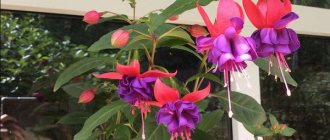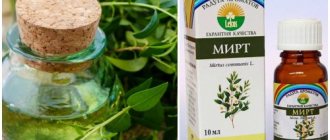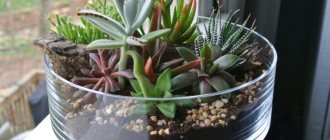The beneficial properties of primrose, or primrose, have been known to flower growers and botanists for several centuries. The plant is widely used for preparing decoctions, ointments, and tablets. Few people know that primrose contains more vitamin C than any known citrus. The culture is also rich in essential oils and carotenes, which promote better hair and nail growth.
The plant has bactericidal and wound-healing properties, so it is often used in folk medicine for scratches, cuts and burns. In addition, the flower is used to brew tea, which helps fight depression and fatigue.
Indoor primrose has become a frequent guest and living decorative decoration in many houses and apartments. Find out how to properly grow and replant a plant in our article with photos.
Lighting
Primrose prefers bright, but diffused lighting.
Window sills facing west or east are perfect for primrose. On the north side there will not be enough light, and on the south window the scorching sun can leave burns on the leaves.
The flower can grow in partial shade and even in the shade, but the lack of lighting will affect the duration of its flowering. If you keep the plant in bright but diffused sunlight, it can bloom from February to July, provided there is plenty of watering and no overheating.
After flowering, the plant begins a dormant period. At this time, it does not form new leaves and peduncles, but old leaves do not fade. At this time, it is best to move the flower to a less lit place and keep it in partial shade. In winter, you need to place it on a northern window sill closer to the glass to provide partial shade at low temperatures. Before flowering begins, the lighting is gradually increased.
Forcing primrose
During forcing, the primrose is transplanted into more favorable conditions for development. Thanks to this, you can get flowers faster, but at the same time the root is depleted. And the plant requires a longer recovery.
Primroses older than 2 years are used for forcing. Before the onset of frost, dig up a flower with a lump of earth. Immediately plant in a flower pot. Bring it into a cool room with a temperature of +4..8 degrees (can be in a cellar or basement). There is no need to water the plant. At the end of January or beginning of February, move the primrose to a bright room with a temperature of no more than +15..18°C. Remove dry and damaged leaves and stems. Gradually resume watering. With this care, primrose can bloom by the end of February. Often forcing is used to obtain flowers by March 8th. After 2-3 years, the procedure can be repeated, at the same time dividing the bush into parts for propagation.
Temperature
The optimal temperature for primrose in winter and spring, during the flowering period, will be 10-15 degrees. If the temperature rises higher, this negatively affects flowering: flowers can quickly fall off, and the flowering period itself is greatly reduced.
An exception is the species “primrose obraconical” - it is thermophilic and requires a temperature of 16-20 degrees for normal development.
After flowering, it is recommended to take the primrose out into the fresh air : to a loggia, balcony or plant it in the garden. It is important to choose a shaded place. With the onset of cold weather, the primrose returns to the house or apartment.
What plants does it go with?
Primrose in landscape design gets along well with almost any flowering crops. Most often, it is planted on the site with phlox, tulips, daffodils and peonies. Ferns and dwarf conifers also successfully coexist with the crop.
The primrose looks attractive against the background of cereals and herbs. You can place it next to astilbe, variable mountaineer or heuchera.
When planting auricular primrose in the garden, you need to make sure that other plants do not shade it or take away moisture.
Watering
During flowering, primrose should be watered abundantly. It is important to ensure that the soil in the pot is always slightly moist .
At the same time, overflowing should not be allowed: stagnation of water in the soil can cause rotting of the root system.
After flowering, watering is slightly reduced. The next moistening is carried out a few days after the top layer of soil has dried.
For irrigation, it is optimal to use rain or melt water at room temperature. As a last resort, let it sit for several days. When watering the plant, you should not allow water to get on the leaves: this can cause them to rot.
The soil
The soil for primrose should not be very nutritious, with a neutral or slightly acidic reaction. You can buy a ready-made substrate for geraniums or flowering indoor plants and add a little sand to it.
You can also prepare the mixture yourself. In this case, you need to mix peat, sand, leaf and turf soil in equal proportions.
Before planting, the soil mixture should be disinfected by spilling it with a weak solution of potassium permanganate.
The pot must be selected with drainage holes. It is important to lay a good drainage layer at its bottom, consisting of expanded clay, clay shards or polystyrene foam.
Fertilizer
Feeding primroses begins with the appearance of the first buds and continues until the end of flowering.
It is optimal to use liquid mineral fertilizers for flowering plants for primrose . In this case, the concentration indicated on the package should be halved. The frequency of feeding is once every 2 weeks.
During the flowering period, you can add organic fertilizer to the soil once - a solution of bird droppings. After flowering, when the plant is at rest, it is usually not fed. But a single application of nitrogen fertilizers to the soil is useful to increase leaf mass during the growing season. Liquid fertilizers for deciduous plants or a 0.1% solution of ammonium nitrate are suitable for this purpose.
Care at different times of the year
in spring
The springs are in their flowering period. It is necessary to ensure +18 degrees. The inflorescences feel great on a glassed-in balcony or in unheated greenhouses.
In summer
After flowering, faded flowers are removed. The keys are transplanted under the open sky into the shade - for rest. If buds appear, they must be removed to ensure abundant flowering in the spring. Make sure the soil is always moist.
in autumn
Preparations for spring begin.
It is necessary to moisturize abundantly. Make sure that the water in the pot does not stagnate.
in winter
Can be reduced to +15. Feeding is done at half the normal amount once a month. Water sparingly as the soil dries out.
Humidity
Primrose is not particularly demanding of air humidity, however, if kept in a room with dry and hot air, measures will need to be taken to increase the humidity. Otherwise, the tips of the leaves will dry out.
To ensure favorable conditions, you can place containers of water around the plant . As it evaporates, it will increase the humidity. Another option is to place the pot in a tray filled with damp sphagnum moss, expanded clay or pebbles.
You should not spray primrose leaves, as excess moisture causes them to deteriorate and rot.
To increase humidity, it is recommended to humidify the air around the flower pot using a fine-grained spray bottle.
Diseases
Now let's look at how to care for primrose at home during a plant illness.
If not properly cared for, primrose can be affected by fungal diseases, leading to rotting of the root system, and viral diseases, causing growth arrest, chlorosis and leaf deformation. Appropriate fungicides should be used to control them.
Among the pests, aphids, spider mites, and thrips can pose a danger to primroses.
They can be removed mechanically by wiping the plant with a swab dipped in alcohol or soap solution. If there are a lot of parasites, you will have to use insecticides: Aktaru, Decis or Actellik.
Problems
- If the primrose drops its buds, the cause may be dry air, insufficient watering or too high a temperature;
- The flowers of the plant quickly wither if the room temperature is above 16 degrees;
- The tips of the leaves dry out due to low air humidity;
- Leaves can turn yellow for several reasons: excessive watering or fertilizing, too high a temperature, dry air;
- Why indoor primrose does not bloom is due to lack of light or high nitrogen content in fertilizers.
Reproduction
Primrose is propagated by seeds and by dividing the bush. Seeds are sown in July-August in a moist mixture of sand and fertile soil (1:1), lightly sprinkled with soil.
Boxes with seeds are placed in a dark place with a temperature of 16-18 degrees and high humidity. When the shoots appear (after 10-20 days), the container is moved to a lighted place, but without direct sunlight.
Primrose seedlings need to be picked twice and transplanted into individual pots . Flowering is expected 6-8 months after sowing the seeds.
Reproduction by dividing the bush is carried out after the end of the dormant period, when the stems begin to grow. The bushes are divided into several parts and planted in loose nutritious soil. In this case, there is no need to deepen the outlet - it should be at soil level.
In order for the plant to take root better, the containers are covered with glass and placed in a lighted place. After rooting, new specimens are transplanted into pots with a diameter of 9 cm, and after another month - with a diameter of 13 cm.
History of appearance
It is not known exactly when primrose appeared; even in ancient times, people knew about its medicinal properties. There are several legends about the origin of the flower. One of them says that the Apostle Peter was the keeper of the keys to Paradise, and one day he learned that evil spirits had forged his keys. Peter got scared and, through his carelessness, dropped the bunch on the ground; later a flower grew in this place, which reminded him of this incident. The primrose inflorescence turned upside down looks like a bunch of keys. Translated from German, the name of the flower sounds like “Peter’s Keys” or “Heavenly Keys”.
Yellow inflorescence
Transfer
Primrose transplantation is carried out in August-September - once every 2 years. The pot is needed a little larger than the previous one, wide and shallow. The optimal way to transplant primrose is transshipment.
When replanting a plant, you cannot bury the rosette into the ground - it must be on the surface. In the year when replanting is not carried out, it is recommended to update the top layer of soil (about 1.5 cm).
Primrose feels better in a clay flower pot. It is permeable to air, unlike plastic, the root system will breathe in it. It is better that the new pot has several drainage holes to drain excess water.
A drainage layer about 2 cm thick is placed on the bottom of the pot. 1-2 cm of fresh soil is poured on top so that the roots of the transplanted plant do not come into contact with the drainage fragments.
The plant is carefully removed from the old pot. If transplantation is necessary, its roots are tightly entwined with an earthen ball. The flower along with the soil is moved to the center of the new pot. There are empty spaces on the sides of the earthen ball that need to be filled with fresh soil mixture.
Now you know everything about planting and caring for indoor primrose at home, as well as how to replant and propagate a flower.
First steps after purchase
Once purchased, it is not recommended to touch the flowering bush. At the end of flowering, it should be transferred to a new container. The pot should be low but wide. A large pot volume leads to intensive growth of the root mass and slows down the flowering process.
A soil mixture for flowering plants is suitable as soil. A new container needs to be filled with substrate and a small depression made in the center. The plant should be transferred into it by transshipment along with a lump of earth. At the end, near the main stem, the soil should be lightly compacted and watered.
Description of the species and varieties
Several types of primrose are grown indoors. The most popular varieties that can grow indoors are:
- Soft indoor primrose;
- Stemless primrose;
- Reverse conical primrose.
Soft indoor primrose has wide light green leaves, not exceeding 30 cm in length and forming a rosette. The stem of the plant is greatly shortened and not noticeable. It blooms in large inflorescences consisting of more than 10 flowers. There are many varieties of this species, differing in flower color:
- "Mars" - purple flowers;
- “Juliet mixed” – double flowers with double color;
- "Enchantment" - blue bloom;
- "Snow Queen" - white flowering.
Stemless primrose is a compact and fairly frost-resistant species. It can be grown both in a pot and in open ground. Some of the most popular varieties of this species:
- “Eclipse Violet with Rim” – flowers with a lilac center and a yellow edge;
- "Sphinx Apricot" - reddish-orange flowers;
- "Sphinx F1 neon Rose" - has flowers of an unusual crimson color.
The reverse-conical primrose has leaves no more than 20 cm long and very large flowers. The most popular variety of this species is “Twilly Touch Me”, which has flowers in blue and purple tones.
What does primrose look like?
Primrose flower is a herbaceous perennial plant belonging to the Primrose family. The leaves are colored in shades of gray-green, often monochromatic. They have the shape of an elongated oval, which tapers downwards. Depending on the variety, the edges of the leaves are smooth or jagged, the surface is smooth or embossed. The leaves are covered with fine hair, soft and slightly fluffy to the touch.
The height of the flowering stem usually does not exceed 25-50 cm; a bunch of leaves grows at its base, which is placed on top of the soil. At the top of the peduncle there is an umbrella-shaped inflorescence, which consists of a group of flowers. There are varieties with a short stem and single flowers. Flowers can be colored yellow, purple, white and red, also in shades of pink and lilac. The petals can be plain or variegated, the core of the flower is often yellow.
Pink flowers
Note! Primrose is not only an ornamental plant, its leaves can be eaten. They contain a large amount of vitamins and carotene. Primrose leaves contain more ascorbic acid than lemon. The leaves are suitable for making salads and are added to soups and stews.
Full size flower
Photo
In the gallery you will see photos of indoor primrose in the process of caring for and growing in a pot at home and in the natural environment.
More information about the types of primrose and other photos can be found here.










